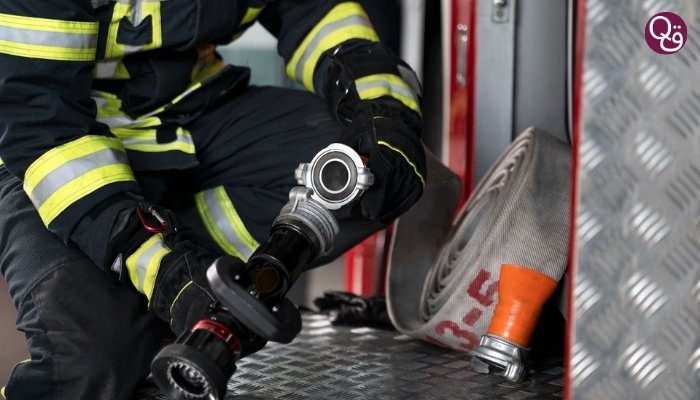The use of Aqueous Film-Forming Foam (AFFF) as a firefighting agent has been a well-established practice in the U.S. military, particularly for extinguishing fires caused by flammable liquids. The DoD utilizes AFFF in approximately 1,500 facilities and over 6,800 mobile assets globally for fire suppression. Nevertheless, the use of AFFF at DoD (Department of Defense) sites has led to PFAS (Per- and Polyfluoroalkyl Substances) contamination in nearby water sources.
The National Defense Authorization Act (NDAA) has directed the DoD to eliminate the use of AFFF at all installations by October 2024. However, this deadline is anticipated to be extended to September 2026.
With the deadline drawing closer, examining the measures the DoD takes to ensure that the U.S. military becomes AFFF-free within the next two years is essential. The subsequent sections outline the comprehensive actions implemented by the DoD to achieve this objective.
Transition to Fluorine-Free Foam
The growing awareness of the health and environmental risks of AFFF has led to numerous lawsuits. This litigation has been consolidated into a multidistrict litigation to manage the numerous cases more efficiently. The MDL includes a mixture of personal injury cases and municipal water contamination lawsuits from local authorities. Consequently, this has compelled the DoD to make significant changes.
An AFFF lawsuit update highlighted concerns about the use of PFAS-containing foams. PFAS has several adverse effects on human health, including impacts on the immune system, the thyroid, and fetal development, as well as risks of liver failure.
DoD’s Shift to Safer Alternatives
The DoD has made significant progress by switching from AFFF to fluorine-free firefighting foams (F3). In 2023, the Air Force allocated over $8.5 million to purchase more than 270,000 gallons of F3 foam. This new foam, already distributed to overseas installations and domestic bases like Tyndall Air Force Base, does not contain PFAS.
Early research indicates that F3 does not have its residue in the environment or accumulate in the body. While tactical systems encounter compatibility challenges with fluorine-free foams, the military addresses these obstacles through training and equipment upgrades.
In addition to transitioning to F3, the DoD has made other substantial investments. These include developing and testing new firefighting foam alternatives that meet performance standards. The Environmental Security Technology Certification Program (ESTCP) and the DoD’s Strategic Environmental Research and Development Program (SERDP) lead in evaluating alternatives.
Given the potential for intense fuel fires, the military maintains high standards for firefighting products. Developing fluorine-free foam has posed challenges, as it struggles to match AFFF’s effectiveness in creating a barrier over fuel fires. The Defense Department has created specifications for these alternatives. Additionally, they have conducted thorough testing to ensure they are safe, effective, and capable of replacing AFFF.
Minimizing AFFF Use in Non-Essential Areas
In 2022, scientists examined the concrete layers from former firefighting training sites and conducted a simulated rain experiment to observe the release of PFAS chemicals. The result indicated that rain effectively washes PFAS from concrete, moving chemicals upward through layers like water in a sponge.
In a simulation of heavy rainfall, approximately 1% of the PFAS present in the concrete was washed away. This indicates that concrete could continuously release PFAS into the environment over time.
Due to this finding, the DoD is proactively taking steps to reduce the use of AFFF in non-essential areas (training exercises). Military branches have now limited the use of AFFF solely to critical emergencies rather than regular training activities. To minimize the release of PFAS into the environment, training and firefighting exercises are now conducted. This process involves the consideration of fluorine-free foams or simulation-based methods.
Environmental Cleanup of Contaminated Sites
The DoD’s plan includes addressing existing PFAS contamination at identified sites. 718 military installations and facilities, including the National Guard, BRAC locations, and FUDS properties, have been marked for PFAS assessment. By June 2024, 712 sites had completed Preliminary Assessments/Site Inspections (PA/SIs). Additionally, 580 had progressed to the next phases of the CERCLA cleanup process.
When immediate human health risks are identified, the DoD takes interim removal actions such as soil extraction and groundwater filtration.
According to TruLaw, PFAS contamination in drinking water is one of the key concerns raised in the AFFF lawsuit. The DoD collaborates with the EPA and local communities in response to the scenes. The goal is to prevent water consumption containing PFAS levels above 70 parts per trillion, both on and off base.
Despite these efforts, there is a significant financial and operational challenge involved. The estimated PFAS investigation and cleanup costs are projected to exceed $2.1 billion. As part of this financial estimate, the plan includes providing alternative drinking water solutions like bottled water or installing treatment systems.
FAQs
Is AFFF still utilized by the Department of Defense?
Under the Fiscal Year 2020 NDAA, the DoD stopped buying AFFF for land use starting October 2023. Currently, the DoD does not employ AFFF in fire training or testing exercises at its facilities. This is unless there are measures to ensure that the foam is entirely contained and disposed of appropriately.
What does the CERCLA process mentioned in the cleanup efforts entail?
The Comprehensive Environmental Response, Compensation, and Liability Act (CERCLA) establishes a systematic process for investigating and addressing contaminated sites. The method includes various stages, such as Preliminary Assessment, Site Inspections, and Remedial Investigations. Following the cleanup, ongoing monitoring and maintenance are conducted to ensure the site remains safe.
How does the DoD engage local communities in the cleanup process?
The DoD partners with local communities and regulatory agencies to ensure openness and accountability during cleanup. This collaboration also involves regular updates and mutual planning to tackle the contamination. Moreover, public meetings and information platforms inform communities about progress and potential risks.
The DoD claims to be committed to eliminating AFFF from its operations. It focuses on transitioning to fluorine-free foams containing PFAS contamination and cleaning up affected sites. The military believes they will achieve an AFFF-free future by 2026 with ongoing development and rigorous efforts.
DISCLAIMER: The images, videos, and logos featured on this page belong to their respective owners. We make efforts to credit and source appropriately. If you discover your image displayed here without authorization, kindly reach out to us with relevant details and a link to the image, and we will promptly address your concerns.
Author
-

I am Andrew Reed, an author and writer at Qatariscoop.com, where I focus on delivering insightful reporting and creating engaging content for readers in Qatar and beyond.
View all posts













